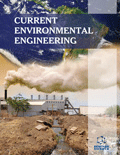Abstract
Background: Extensive use of electronic devices has led to the generation of large volumes of electronic waste (e-waste) worldwide. Currently, only a small fraction of e-waste is being treated or recycled appropriately; most e-waste is dumped, incinerated or disposed of in landfills Awareness regarding the environmental impact of managing e-waste has become significant in recent years.
Objectives: The aim of this study was to estimate the environmental impact of recycling waste printed circuit boards (PCBs) using thermal plasma. In-depth characterization of particulates released during waste processing was carried towards ensuring that no toxic/hazardous elements get released to the atmosphere.
Methods: Waste PCBs were cut to sizes ~10-15 cm; and were heated to 1500°C for 30 minutes in the oxygen depleted atmosphere of a plasma furnace. The exhaust gas from the reactor was cooled down in a heat exchanger, and was then passed through bag-house filters before exiting through a stack chimney. Particulates present in the exhaust gas were captured by the bag-house filters and characterized.
Results: The proximate analysis of captured particulates showed a high concentration of carbon along with oxides, metals and other impurities. Particulate sizes were found to range between 3 to 200 µm, and their distributions at 10%, 50% and 90% levels were determined to be 1.696 µm, 10.318 µm and 55.042 µm respectively. Elemental analysis showed clear evidence for the presence of heavy metals (Cu, Al, Fe, Sn, Pb, Zn, Ni), hazardous metals (Sb, As, Cd), and several other metals in trace quantities. A small amount of precious metals was also detected. X-ray diffraction and FTIR studies were found to be in good agreement with results from other techniques.
Conclusion: This study has shown that some metallic and other impurities could be carried out along with the exhaust gas during the recycling of e-waste. Effective control of gaseous emissions from ewaste recycling facilities is therefore crucially important for minimizing the environmental impact of ewaste management and processing.
Keywords: E-waste, recycling, plasma, emissions, pollution, PCBs.
Graphical Abstract
 19
19 1
1

